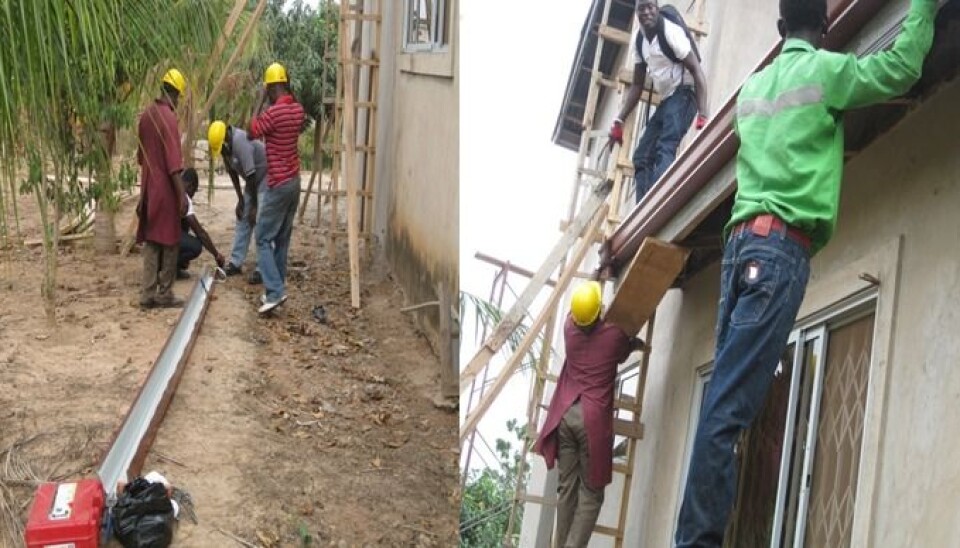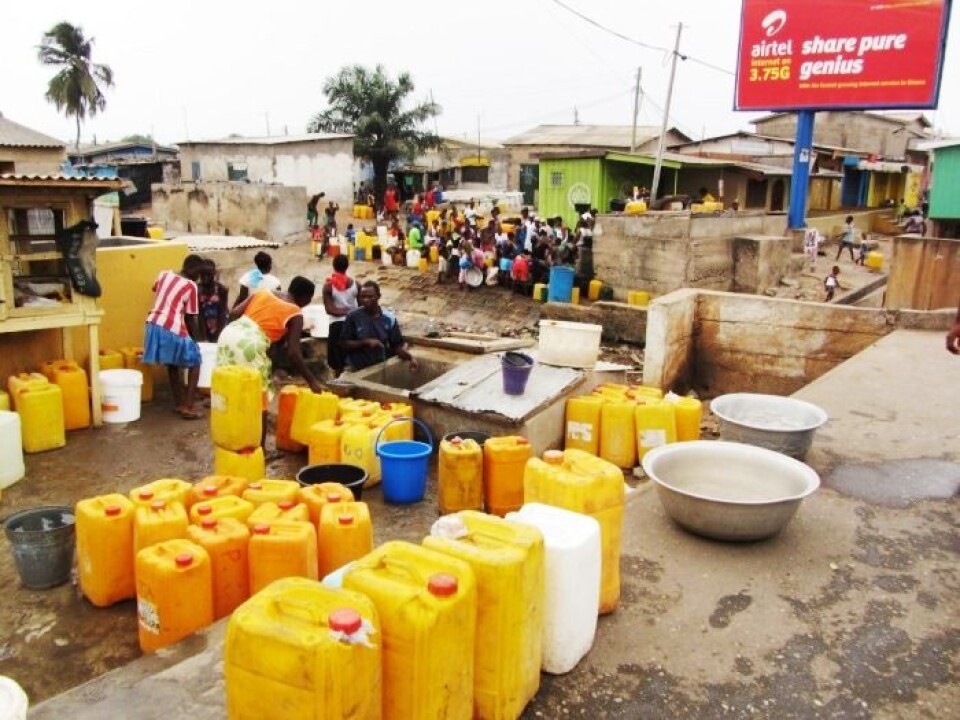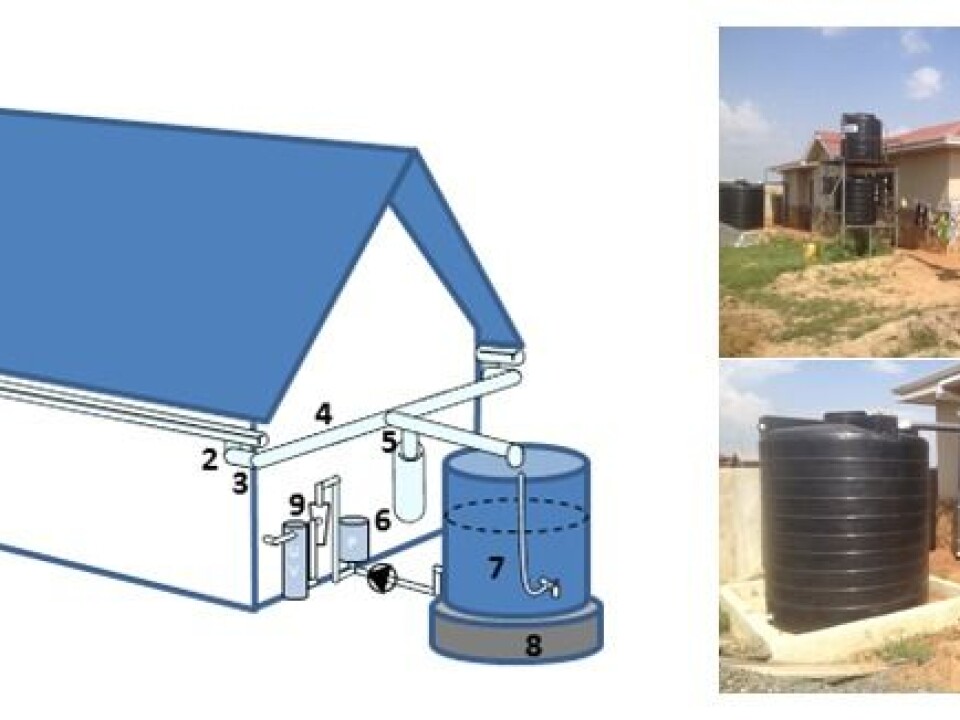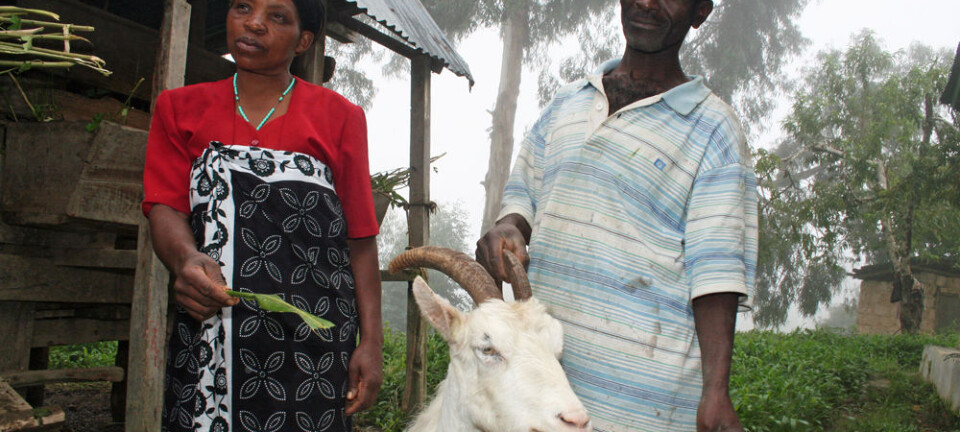An article from Norwegian SciTech News at SINTEF

Using rooftop rainwater to make drinking water
Climate change will lead to water scarcity in large parts of Africa. But there is hope – on African rooftops.
Denne artikkelen er over ti år gammel og kan inneholde utdatert informasjon.
Ghana is a densely populated country with high levels of poverty, and access to clean water is a problem for many people, whether they live in rural areas or in the many fast-growing towns.
“What this means is that the country is unable to supply all its inhabitants with sufficient clean water”, says researcher and social anthropologist Sigrid Damman at Sintef.
She is currently involved in the development of better water systems for the country, in order to ensure that people have more sustainable access to clean water. To this end, she has been working closely with economists and water researchers at Sintef.
“Ghana has a great deal of groundwater and several major rivers that can be utilised, but the infrastructure in many places is poor or inadequate. People are working hard to achieve the development targets set by the UN, but the challenges are enormous, not least because of climate change”, says Damman.

The climate in Ghana is extremely dry in the north and more humid in the south. The total amount of rainfall is very high, but there are relatively long periods when there is no precipitation at all. T
his means that the water is there, but the challenge is collecting it, storing it and distributing it – without compromising its quality.
Simple, but functional technology
Ghana has a growing middle class that enjoys a comfortable income from oil, trade and IT. This means that some Ghanaians can now afford to pay for their own water systems. And it is on this group that the researchers have been focusing.
“What we have put together is a water collection system made from simple but functional technologies that collect, store and purify rainwater from the rooftops”, says Damman.

One of the reasons why the researchers have turned to the rooftops is because rainwater is essentially clean, while groundwater can often be saline. Collecting rainwater not only prevents problems with flooding in the rainy season, but can also save its users money.
“The pilot system put together by the Norwegian researchers comes in three versions”, explains researcher Herman Helness, who is a water researcher involved in the project.
“The most basic version consists of a simple collection system and a storage tank available in different sizes, depending on consumption, the roof and the precipitation pattern. It provides water that is good enough for most purposes, but which has to be boiled or purified before drinking”, he says.
“The second system benefits from the addition of a pump, distribution unit and a filtration unit. This produces cleaner water and can be combined with chlorination to provide water of drinking quality. The most advanced system contains an integrated UV disinfection system, as well as a filter. This provides water that can be drunk straight from the tap. Sunlight can be used for the UV purification process, but it is safer to use a purpose-built lamp”, says Helness.
No tradition of drinking rainwater
However, the challenges are not just technical. There are also cultural barriers. Ghanaians regard rainwater collection as a ‘primitive’ solution, and many of them believe that rainwater will turn slimy and smelly.
Although people do use buckets, they have been advised in the past against collecting water in large quantities, because of the danger of parasites and bacterial growth in water that is left to stand.
“This is understandable, when you consider the tropical climate”, says Damman. “So an important aspect of the project involves talking to local people and educating them. The water we produce is clean drinking water, and it is important to explain to the users how and why the systems work”, she says.
The market and jobs are vital
After two years’ work, 20 households in the Ghanaian capital of Accra have joined the project as pilots, and have installed water collection and purification systems on their roofs. A school building is next in line – and the results look promising.
The aim is to develop a quality system that is inexpensive enough to offer a good alternative for ordinary people. Ghana is no longer considered to be a developing country, and is now classified as a middle-income country by the World Bank.
The researchers are now busy training workmen to install and maintain the systems. They hope that the water systems will also be able to generate jobs.
“Our aim is to scale up the project and make the systems cheaper and more easily available, thus making them a more viable investment for local people. This system already provides water that is cheaper and safer than that bought in by tankers, which is currently the main source of water for many Ghanaians”, says Damman.


































